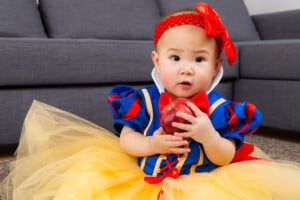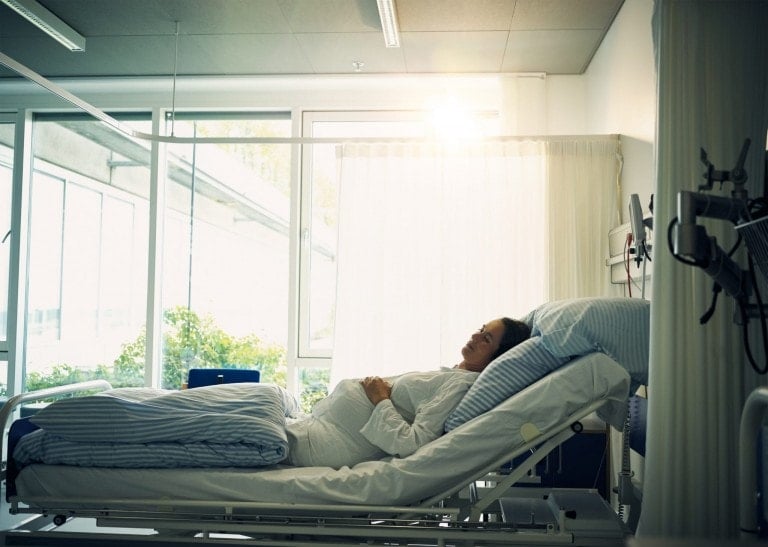When I was pregnant with my first child, so much focus was on the baby. Every question revolved around my daughter. How big was she? How was she growing? What percentile was she in? When was her due date? While surfing a random Facebook page during my third trimester, I finally read about the placenta. I had heard mention of its location in my uterus in my 20-week anatomy scan. But nothing made me sit up and listen or investigate further. Once I heard more about the impact of placentas on other women’s pregnancies and upcoming births, I was curious and wanted to learn more.
My curiosity only got me so far as a quick Google search before I got bored and moved on. But something in me remembered to ask to see it after the birth of my daughter. My OBGYN, the lovely, supportive provider she was, had no hesitations in holding it up by the membranes and showing it to me. Smiling, she told me what a healthy placenta I had. Almost pleased or proud of the fact that I grew it perfectly all by myself. I loved that moment. I loved seeing the home where my darling daughter spent almost 42 weeks. But that was it. It disappeared two minutes later, and all focus was back on the baby.
Fast forward 10 years, and I am now a mother to three beautiful children. In a wild and wonderful twist of events, placentas are all I think about and talk about! I’ve built an entire business based on placentas alone. And I couldn’t love it more! But I know many moms or moms-to-be don’t fully understand what the placenta is or what it does. So I’m here to share all I know!
What Is a Placenta?
The placenta is an organ within the uterus. Its job is to give the baby everything it needs to grow and thrive until birth. The placenta has three structures: membranes, an umbilical cord, and the main part, the placenta itself.1
What Does the Placenta Do?
The placenta is a facilitator organ. It is not, as many believe, a filter organ. It facilitates the baby’s growth, supplying oxygenated blood and vital nutrients.6 Once the placenta serves its purpose and the baby has acclimated to its new environment, is breathing by itself, etc., the body expels the placenta after birth.1 It is the only organ we grow, use for a few months, and essentially discard (assuming it is not kept for personal consumption or usage i.e. placenta encapsulation).7
All You Need To Know About the Placenta
From roughly the end of the first trimester, the placenta is formed and ready to nourish and support the baby’s life in the womb. What is known as the “maternal side” is attached to the uterus, leaving the baby with the “fetal side” to cuddle up to and play with for their time together.1 One of the placenta’s main jobs is to ensure the maternal and fetal blood never mix due to the placental membrane.7
Here’s more information about the placenta’s three structures:
The Placenta
This essential organ can attach to any part of the uterus and grows and moves with the growing uterus.1 Some mothers may notice they don’t feel their baby kick as soon as other pregnant colleagues or friends if they have an anterior placenta. This is where the placenta attaches to the front of the uterus. Kicks will become more frequently felt from 20-ish weeks in pregnancy when a mother has an anterior placenta.8
The placenta may sometimes attach relatively low, causing early pregnancy concerns. It is important to note that a low-lying placenta and placenta previa are two different things. A low-lying placenta is attached close to the opening of the uterus.1 Often, this corrects itself as the uterus grows and expands upwards, moving the placenta.7 A placenta that completely covers the uterus’s opening, resulting in the need for a surgical birth, is called placenta previa. This condition is rare, with only one in 200 women being affected during their third trimester.2
The Umbilical Cord
While it’s anyone’s guess where the placenta will attach itself to the uterus, the same can be said for the umbilical cord insertion in the placenta. There are many varieties of cord insertions, but the vast majority of insertions are central and eccentric insertions.3
This amazingly long and strong cord connects the baby and the placenta. The umbilical cord houses three blood vessels. One is a vein that brings oxygenated, nutrient-rich blood from the placenta to the baby. Two are arteries that carry waste from the baby back to the placenta for the mother to excrete.9 The three vessels are vital and protected from being squashed or compressed by a substance called Wharton’s jelly.4,9 Many scans show the baby playing with the umbilical cord, wrapping their little hands around it, etc.
The Membranes
Attached to the organ are two strong membranes: the amnion and the chorion. The baby, the umbilical cord, and amniotic fluid are within these membranes. These membranes, like the placenta, will grow throughout the pregnancy.7,9 Once the time for birth comes, there will be a tear in the membranes, and amniotic fluids will leak. Approximately one in 80,000 babies will be born en caul, which means the membranes will be fully intact at birth.5
The placenta is an amazingly complex organ that, luckily, has become more known about and understood in the mainstream world. More mothers are openly curious about it, and more and more providers are offering “placenta tours” at the bedside after the birth. Many cultures refer to the placenta as the baby’s first friend, as throughout the pregnancy, the baby has come to know and love this wonderful organ as it should! The next time you give birth, perhaps ask your provider to give you a little tour of your placenta. It’s really impressive!































